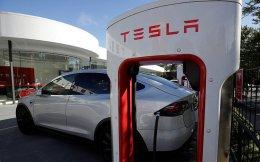State Bank of India, the country's biggest lender, will need to raise funds beyond the $1.6 billion assured by the government on Monday to meet rising demand for loans, a top bank official told Reuters.
Several government-run banks, struggling with slowing but still-rapid loan growth and the threat of delinquencies as borrowers in the infrastructure, property and airline industries struggle, face a challenge to raise capital as interest rates remain high and markets are choppy.
Many of India's state-run banks, which account for 70 per cent of lending in Asia's third-biggest economy, need to raise capital urgently to strengthen balance sheets eroded by fast loan growth and worsening asset quality as economic growth slows.
Some had hoped to hit public equity markets to raise capital but a plunge in Indian stocks last year made that impossible, putting pressure on the deficit-strapped government to step in.
"You are kind of trapped in a cycle where there is no way to escape. Government wants to maintain its holding in state banks but they don't have enough capital themselves," said Michiel Van Voorst, senior portfolio manager for Asia Pacific Equities at Robeco Hong Kong Ltd, which holds 343,500 SBI shares.
India is widely expected to fall far short of its target to trim the fiscal deficit to 4.6 per cent of GDP for the fiscal year that ends in March, and may struggle to commit all the funds that state lenders are seeking, investors say.
"The whole thing ultimately points out to that fact that the government needs to address the fiscal sustainability," Van Voorst said.
The government will inject Rs 79 billion into SBI by buying shares through a preferential allotment, the lender said on Monday.
That is likely to raise New Delhi's holding to 61-61.7 per cent from 59.4 now, Chief Financial Officer Diwakar Gupta said on Tuesday.
However, the bank needs Rs 150 billion, including retained profit, a year in order to meet loan demand, he said.
"We will definitely need to raise money in the next financial year. We will have to see if the government is putting more money," he told Reuters by telephone.
SBI had earlier planned a $4.5 billion rights issue but was thwarted by weak stock markets, including a 42 per cent drop in its own stock during 2011 on investor worries about declining asset quality and a thin capital cushion.
The next financial year begins on April 1.
Joining The Queue
SBI is not alone in its need for capital.
No. 2 state lender Punjab National Bank and smaller player Central Bank of India (CBI.NS) said this week in separate announcements their boards have approved issues of shares to the government on a preferential basis.
Indian Overseas Bank, another state lender, said on Tuesday the government has "indicated its intention" to inject capital into the bank. Other state lenders including Bank of Baroda (BOB.NS), Union Bank of India and Bank of Maharashtra are also seeking government funds.
New Delhi has said it is likely to infuse up to Rs 160 billion into state banks in the current fiscal year to shore up tier-I capital adequacy ratios to its targeted 8 per cent.
Bank lending in India is expected to grow about 16 per cent in the year that ends in March, slower than the 21 per cent growth clocked in the previous fiscal year.
G. Chokkalingam, chief investment officer at Centrum Wealth Managers, said loans at state banks are growing faster than retained profits, driving the need to raise capital.
Soured Loans
"State banks have a social objective and there is a bit of inefficiency as well. Not to say that they are doomed but I am not very optimistic," said Chokkalingam, who has 10-15 per cent of his portfolio in banks but does not own SBI shares.
Bad loans in India could jump to as much as 5.8 per cent of the total within two years in a "severe risk" scenario, from 2.8 per cent in September, according to a central bank report. The ratio is expected to climb to 3.2 per cent to 3.5 per cent by March 2013 under its baseline scenario.
The non-performing loan (NPL) ratio for Indian banks was 2.3 per cent in the last fiscal year.
SBI is the lead lender to troubled Air India and Kingfisher Airlines, which are having difficulty paying interest on their loans.
Van Voorst, who owns shares of State Bank of India, said he was worried about bad loans in the system.
"SBI needs to show that it can control its bad debt situation and that it will control slippages so there is more confidence among investors," he said.
Fitch Ratings, which has a "stable" outlook for Indian banks, expects state-run banks' profits to fall by 15 to 20 per cent in 2012 due to higher loan-loss provisions.
State Bank of India is expected to post net profit of Rs 109.8 billion in the year ending March, according to Thomson Reuters I/B/E/S. It earned net profit of Rs 106.9 billion in the previous year.




